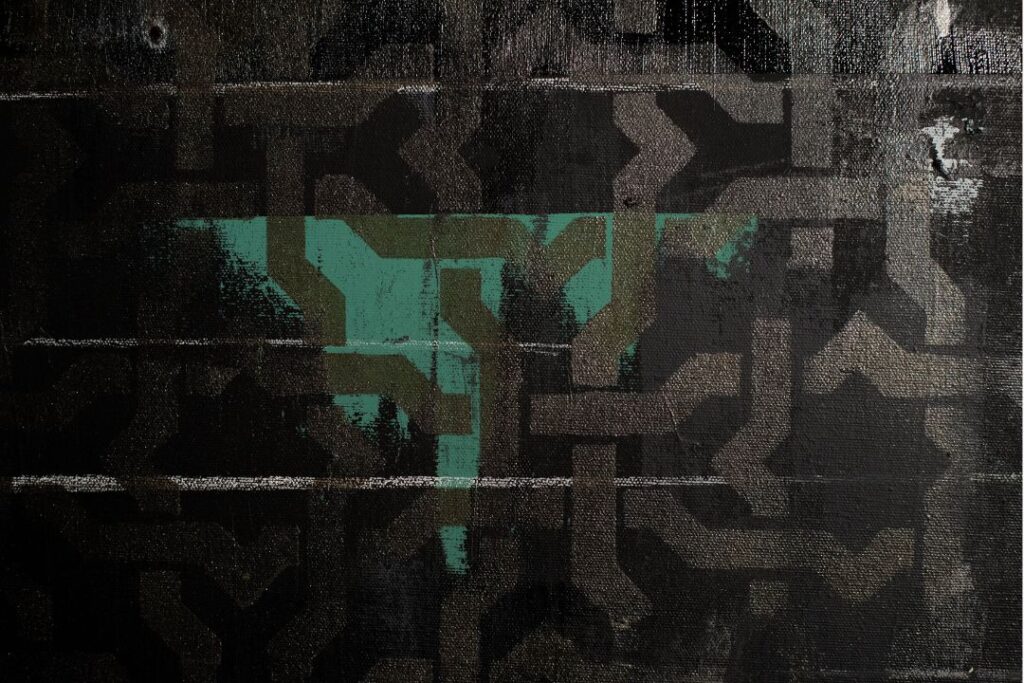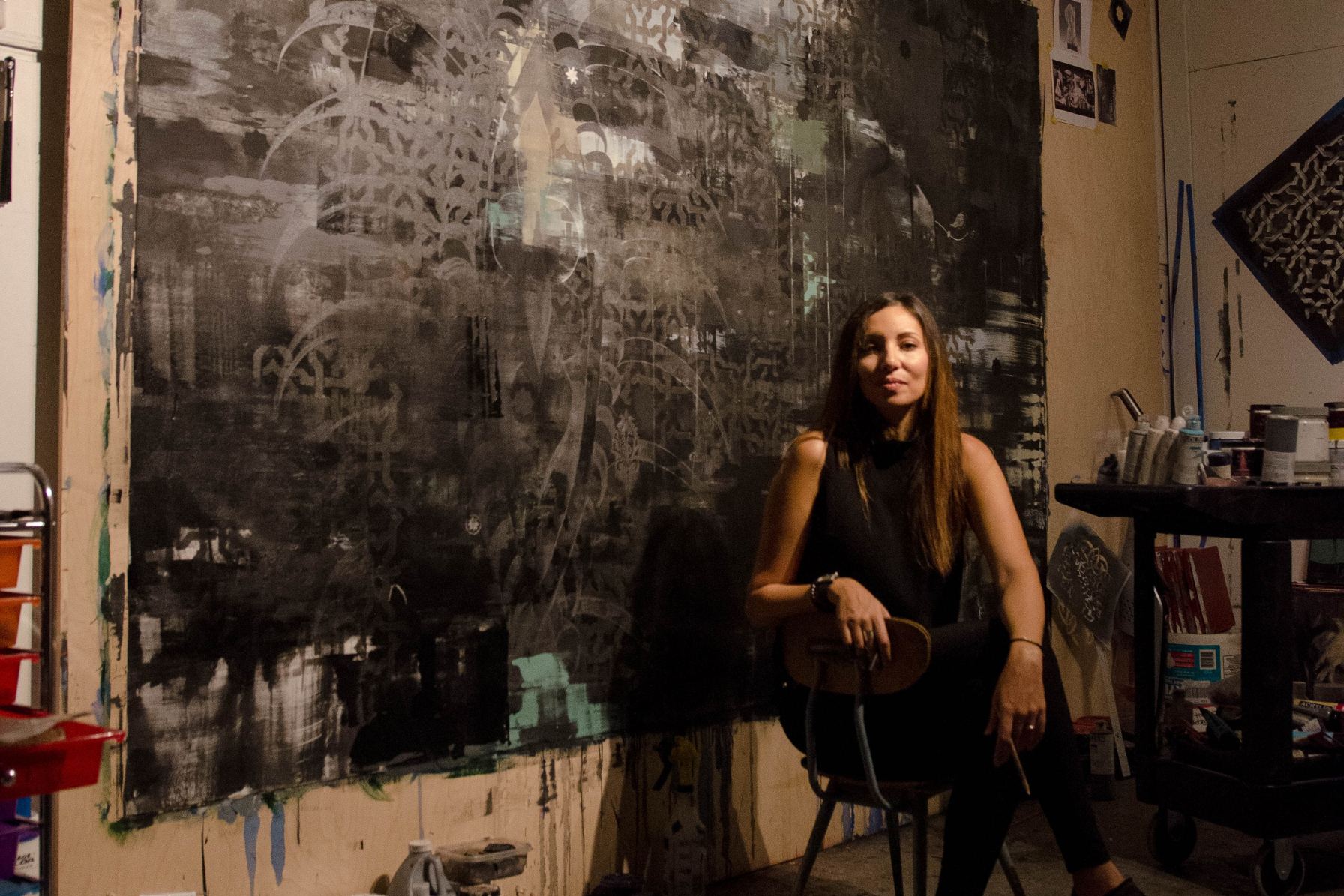Text by Natalie Schack
Images by Vincent Bercasio
“If you’ve had a normal childhood, then fireworks are enjoyable,” says artist Reem Bassous. “But for the rest of us, they’re not.”
Bassous is remembering a poem. She’s paraphrasing “No Explosions” by Naomi Shihab Nye, as she sits among stacks of canvases and paint-splashed walls in her Kaka‘ako studio at Lana Lane Studios. She is thoughtful, warm and subdued, with a gentle grace, welcoming me into her space with a spread of pastries and coffee. She exudes a sense of peace, even as she sits among her work: walls of undulating black, grotesquely pained and distorted portraits, abstractions of suffering, war, death, sorrow—things that haunt her past, and why she identifies so much, personally, with Nye’s poem. “I have a hard time with fireworks,” Bassous explains.


From 1982 to 1990, when she was in her early teens, Bassous lived in Lebanon during the country’s civil war, a violent, tumultuous time punctuated by bombing, chaos, and death. “I remember, they would have to close school because there would be heavy shelling for a couple of weeks. And then we’d come back and we’d have a student in our class who passed away. And we never really talked about these things. It was so normalized because it happened so frequently.” Memories and events from those early years are still pervasive in her mind, coloring her entire life and, of course, her work.
Lately, that means paintings that make heavy use of the color black. So much black, in deep swaths over canvases the sizes of walls, exposing gradations of shades as if challenging themselves to get blacker. And, also, red. Dripping and sweating down the sides of portraits like open arteries. Shocks of red slashed over mournful, imploring faces like so many lacerations.
Her series of portraits titled Moribund Outlivers is years in the making. We page through them: canvases of melting faces, one after another, in a nightmarish assembly line. Some of the faces are mournful, some vicious, some resigned, all distorted. “You just start to think that these survivors were not these fully intact human beings,” she says. “Almost one step removed from humanity. It has to do with a lot of things: Survivor’s guilt. Just the fact that war alters you. Some people were participants in combat, who just are completely changed after that. There’s the victim, there’s the aggressor—there’s all these different roles that these survivors play. Moribund means you’re nearing death and outlivers, [meaning that] basically, you’ve lived past your expiration date.”

Undulating black, distorted portraits, and haunting abstractions are common themes of Bassous’ work.
Bassous’ painting is explorative, always rich with such contemplative metaphors. Often, she uses her paintings as a way for her to work through her own demons, unresolved ghosts that haunt her from the past, anxieties about the suffering of others in the present, or even questions of death and the future. She has painted and worked her way to resolutions, regaining a sense of agency, even letting go of recurring nightmares after creating a piece related to that nightmare.
“When I was working on warscapes, I would feel like I was in control of the construction of the cities and the deconstruction of the cities,” she says. “And that would make you feel very powerful.”
The central fixture in her studio is a massive piece the color of heavy smog featuring religious iconography, with bare canvas peeking through the sooty shadowing. In it, Bassous is exploring more of the macabre abstractions that characterize her practice: the finite, the infinite, death, the afterlife. “My coming to terms with death is … nonexistent,” she says with a wry laugh. “I have a very hard time believing that it is the end of the road.” This latest painting, in part, is a reflection of this conflict within Bassous, and of her resistance to various interpretations of the afterlife.

Bassous has painted and worked her way to resolutions.
On one hand, unable to believe in the finality and nothingness espoused by atheists, on the other, critical of the paradise promised in religions, and the prices paid to access that paradise. There are more questions than answers. Will the afterlife be a merging of all consciousness into one superphysical entity, something out of a Russian sci-fi? Or will it be an oasis of babbling waterways and white marble? Where did they go, the ones that have been loved and lost? But perhaps, later, there will be some peace.
“When you lose someone in such a shocking way, you just can’t bring yourself to believe that you’re never going to see them again,” Bassous says. “I loved what the artist Anton Kiefer says about the cosmos, that there’s definitely something out there that will be beyond our understanding. I love that idea. I love the potential of that idea. Which is why I have a very hard time believing that this is the end of the road here.”





